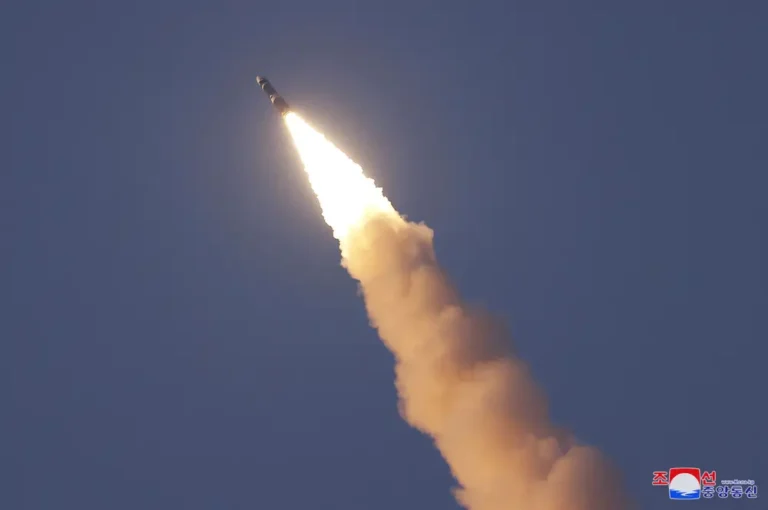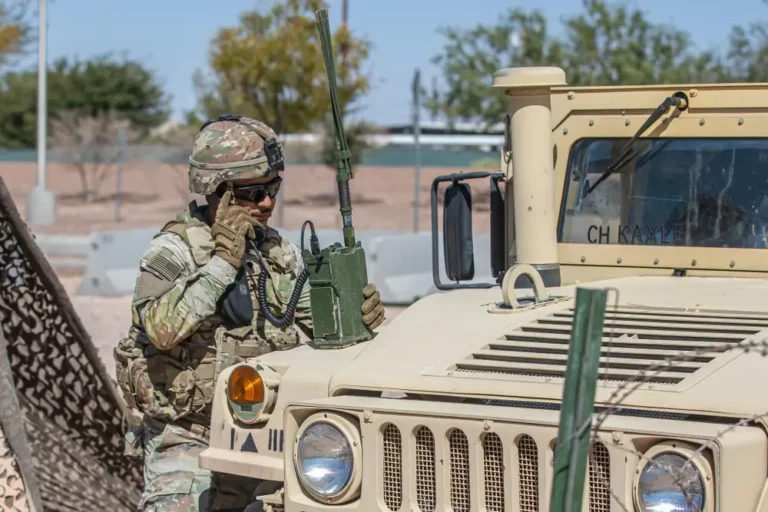AeroVironment’s Switchblade drones are the US Army’s latest big bet. See the small but mighty munitions in action.
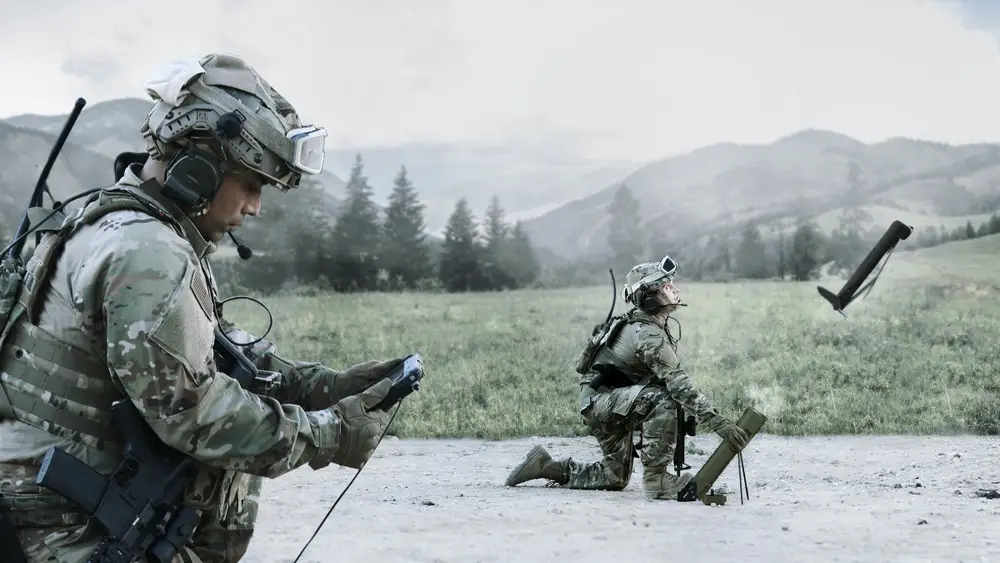
Soldiers launch and control a Switchblade 300 drone.
Switchblade drones, a loitering munition used for attack and reconnaissance, weigh under 10 pounds and can fit in a soldier’s backpack.
Though small in size, the miniature munition packs a punch.
For over a decade, the US military has invested millions in the one-way bomber drone to provide fast, cheap close air support with more precision and less collateral damage.
Earlier this year, the US Army announced plans to field more than 1,000 of the largest Switchblade drones over the next year. Last month, the service signed a massive deal worth up to $1 billion to acquire more Switchblade drones.
Since its inception, the drone has enabled armed forces worldwide to adapt to a modern battlefield.
Scout to attack drone
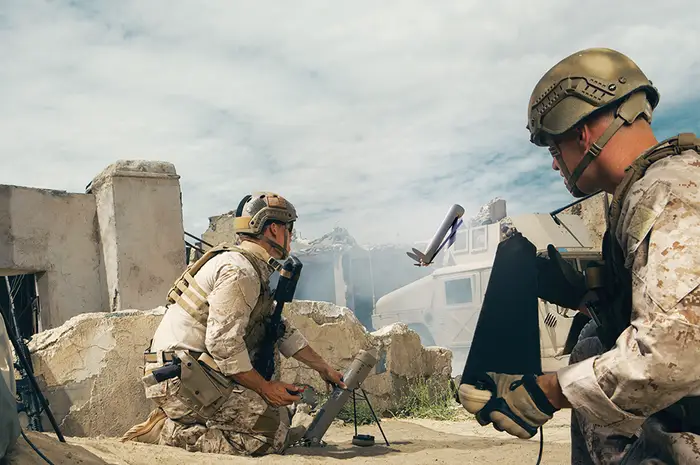
Soldiers launch a Switchblade drone near rubble.
Developed by American defense contractor AeroVironment, the drone was initially pitched as a scouting tool, launched from a 105mm mortar barrel, to assess damage in hostile areas without sending personnel on the ground.
While the surveillance concept wasn’t approved by the US Air Force Special Operations, the tube-launched design was included in its future, more lethal prototype.
Funded by a $4.9 million contract from the US Army in 2011, the Switchblade was deployed in the US War in Afghanistan and used on a limited basis to counter insurgents during Operation Desert Storm.
Once the Army and Marine Corps became more familiar with the new technology, demand for looked to the explosive drone grew as a “more rapid and effective way to address threats they could identify from a distance,” according to a Defense Department release.
Real-time reconnaissance from a distance

A US Marine monitors the visual feed from a Switchblade 300.
Like other drones, the Switchblade is equipped with cameras and advanced sensors for remote control and conducting real-time reconnaissance from a distance.
A miniature makeshift missile
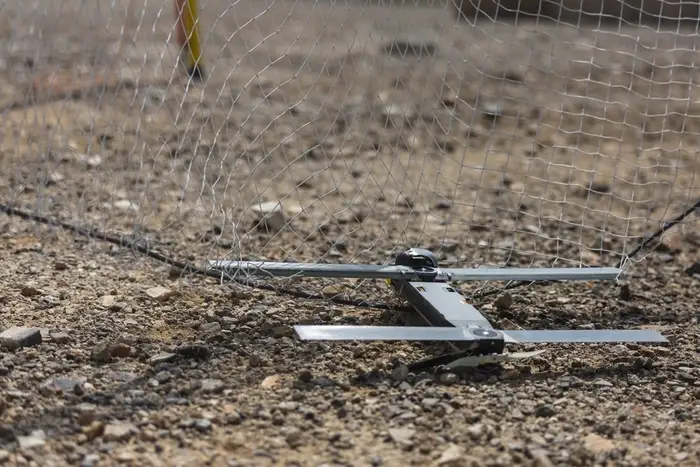
A Switchblade 300 drone sits on the ground next to metal fencing.
Unlike other drones, the Switchblade is also packed with all-electric explosives, which work with its reconnaissance components to identify a target and propel itself toward it, detonating on contact.
AeroVironment considers the Switchblade as a “tactical missile system,” a nod to the hybrid nature of the flying lethal camera robot.
The drone’s camera suite allows it to engage targets with more precision, resulting in a lower likelihood of harm to civilians. However, the drone is only as discerning as its remote operator, and it has been involved in at least one accident, where children were mistakenly killed.
Drone variants

AeroVironment’s Switchblade drones are seen in flight.
Since its inception in the early 2000s, AeroVironment developed two primary variants of its drone — Switchblade 300 and Switchblade 600 — each with its own set of subvariants.
Switchblade 300
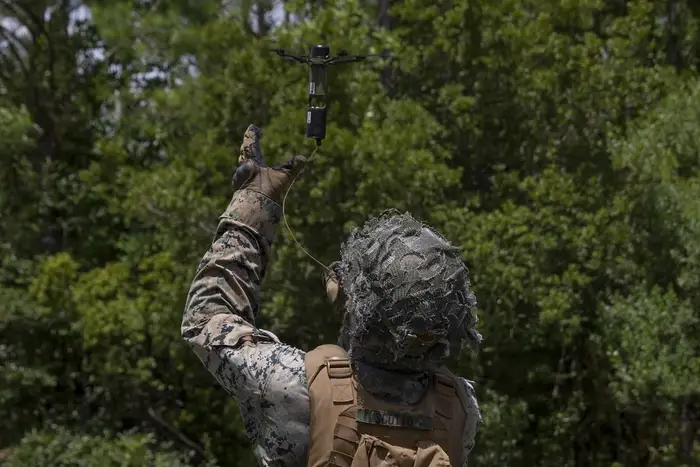
A US Marine reaches out to retrieve a drone during a training exercise.
Switchblade 300 Block 10C, the first generation of the 300 variant, measures two feet and weighs six pounds. With a range of just over six miles, the drone can travel nearly 100 miles per hour and loiter for up to 10 minutes.
Its more advanced successor, Switchblade 300 Block 20, is equipped with a warhead as powerful as a 40mm grenade. It has an improved digital data link to prevent signal jamming and a more advanced camera suite with a higher-quality video feed.
The next-generation drone is lighter than its predecessor, has a range of more than 18 miles, and can fly for up to 20 minutes.
The Switchblade 300 also has an unarmed variant known as the Blackwing, which was provided to the US Navy in 2015.
Similar in size to the Switchblade 300 Block 20, the Blackwing is designed to be deployed from a submerged submarine, surface ship, or mobile ground launcher.
Switchblade 600
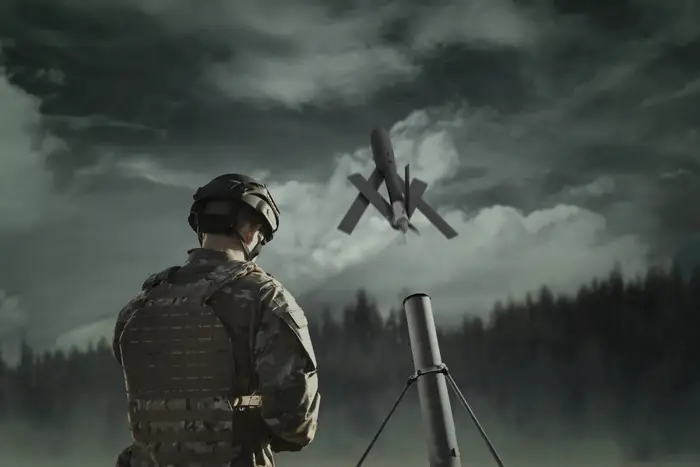
Switchblade 600 is an all-in-one, man-portable loitering missile.
The Switchblade 600 is the more upgraded version of AeroVironment’s loitering munitions.
Clocking in at 33 pounds, the drone is much larger but features more advanced reconnaissance and attack functions, including an anti-armor warhead capable of taking out tanks and armored vehicles.
Built to be deployed in less than 10 minutes, the Switchblade 600 has a range of 25 to 56 miles, reaching speeds of 70 to 115 mph.
Deployed around the globe

A Switchblade loitering missile drone is on display at an arms show in France.
The Switchblade has been used in major conflicts around the globe, most notably in Ukraine.
Months after Russia invaded Ukraine in 2022, the US sent 100 Switchblade 300 systems as part of its multibillion-dollar security assistance to Ukraine. However, the miniature missiles weren’t the most effective at taking out Russian tanks and heavy vehicles, and Ukrainian forces turned to commercial drones with cheaper explosives instead.
Earlier this year, the US approved the sale of more than 1,000 small armed drones — more than 700 of which were Switchblades — to Taiwan amid heightened tensions with Beijing.
As of July 2024, Israel also received at least 200 Switchblade 600 drones as part of US arms transfers to counter Hamas rebels, according to a release from the DC-based nonprofit Jewish Institute for National Security of America.
Armed forces from the UK, France, and Australia have also acquired the miniature loitering munitions for their arsenals.
Ramping up production
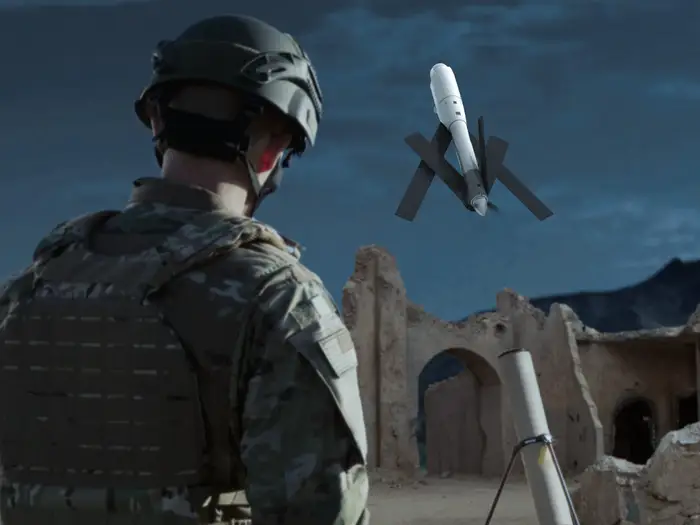
A soldier stands at a distance as a Switchblade 600 is launched.
While Switchblade drones have seen use throughout the years and across the world, AeroVironment has plans — and millions of dollars in funding from the US Army — to ramp up production even further.
Last month, the Army awarded a five-year contract with a ceiling value of $990 million to AeroVironment to supply “an organic, stand-off capability to dismounted infantry formations capable of destroying tanks, light armored vehicles, hardened targets, defilade and personnel targets.”
Charlie Dean, AeroVironment’s vice president of sales and business development, told Defense News that the contract includes delivering Switchblade 600 drones to Ukraine, which has shown “considerable interest” in acquiring the anti-tank smart flying mortar.




